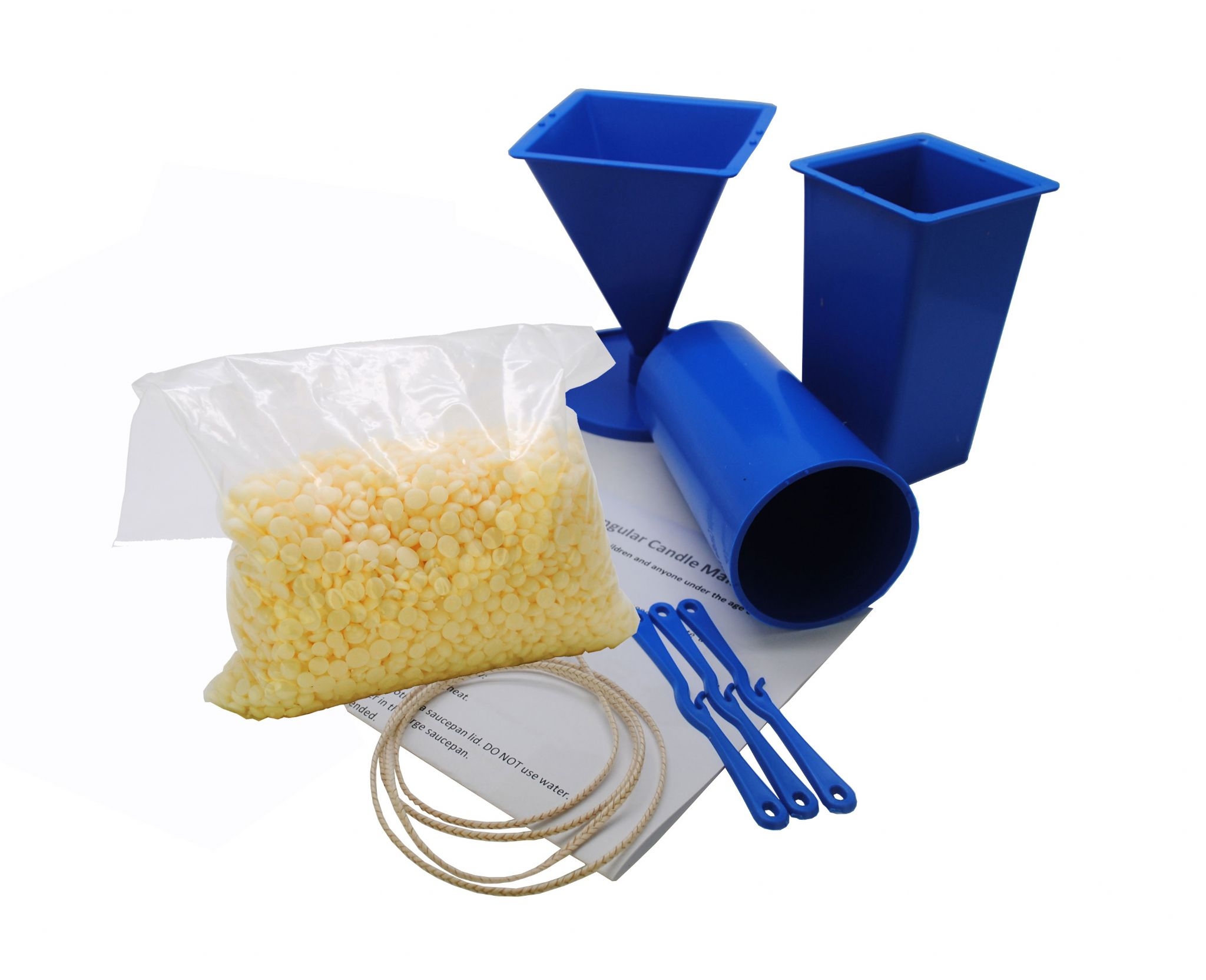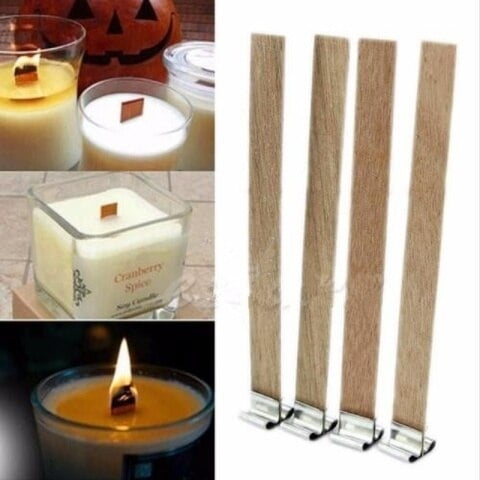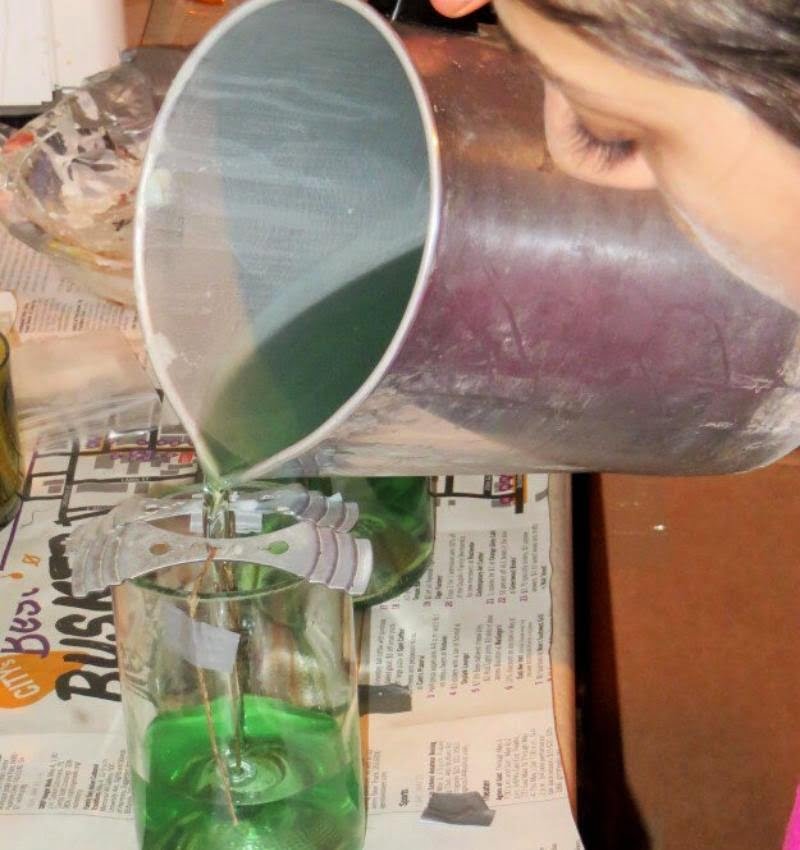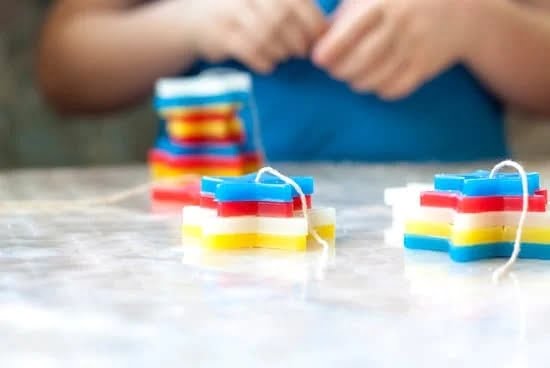Are you considering starting candle making as a new hobby or maybe even as a potential business venture? If so, you’ve come to the right place.
Candle making is a fascinating and rewarding craft that allows you to unleash your creativity while making something functional and beautiful. In this article, we will guide you through the basics of candle making, from understanding different types of waxes and wicks to selecting fragrances and colors, troubleshooting common problems, and even transforming your hobby into a profitable business.
Candle making dates back centuries when candles were essential for providing light before the invention of electricity. Today, it has evolved into an art form that combines science with creativity. Understanding the fundamentals of candle making is crucial before diving into this craft. From the various types of waxes available such as soy, paraffin, and beeswax to choosing the right wicks that will burn efficiently, each component plays a vital role in creating high-quality candles.
To start your candle making journey, you will need some essential equipment such as a double boiler or microwave-safe container for melting wax, a thermometer to monitor temperature, molds or containers for shaping candles, wicks and holders for proper burning, fragrance oils or essential oils for scenting, and dyes or pigments for coloring.
Once you have gathered all the necessary supplies and familiarized yourself with the basics, you can proceed to create your first homemade candle following our step-by-step guide in the next section.
Understanding the Basics
When starting candle making, one of the fundamental aspects to understand is the different types of waxes and wicks available for use. Choosing the right combination of wax and wick can significantly impact the quality and performance of your candles. Here are some common options to consider:
- Paraffin Wax: This traditional wax is commonly used in candle making due to its affordability and ability to hold fragrance well.
- Soy Wax: A popular choice for those looking for a more natural option, soy wax burns cleaner and slower than paraffin.
- Beeswax: Known for its natural aroma and long burn time, beeswax is a premium option that creates beautiful, dripless candles.
In addition to selecting the appropriate wax, choosing the right wick is equally essential. The type and size of the wick will determine how your candle burns. Here are some common types of wicks to consider:
- Cotton Wicks: These wicks are versatile and work well with various types of wax.
- Wooden Wicks: Offering a unique crackling sound when burned, wooden wicks are excellent for soy or beeswax candles.
- Zinc-Core Wicks: Ideal for paraffin candles, these wicks help reduce smoking and mushrooming while burning efficiently.
By understanding the characteristics of different types of waxes and wicks, you can tailor your candle making process to suit your preferences and produce high-quality candles that will delight your customers or enhance your home décor. Experiment with various combinations to find the perfect match for your desired candle aesthetic and functionality.
Essential Equipment Needed to Start Candle Making
Embarking on the journey of starting candle making as a hobby or potential business venture requires the right equipment to ensure successful creations. To begin this fulfilling craft, it is crucial to have the essential tools and materials at your disposal for a seamless candle making process.
Wax Melting Pot
One of the most important pieces of equipment you will need is a wax melting pot. This specialized container is designed to safely melt candle wax without creating a mess. Choose a pot with a spout for easy pouring and ensure it is heat-resistant to withstand the melting process.
Thermometer
A thermometer is another essential tool for candle making, as it helps monitor the temperature of the melted wax. Maintaining the correct temperature is crucial for achieving quality candles, so investing in a reliable thermometer is key to ensuring your candles turn out perfectly every time.
Containers and Molds
Containers or molds are necessary for shaping your candles into their desired form. Whether you prefer jar candles, pillar candles, or votives, having the appropriate containers or molds on hand will allow you to create a variety of shapes and sizes. Make sure to choose containers made from materials that can withstand heat, such as glass jars or silicone molds.
By equipping yourself with these essential tools and materials, you can confidently begin your journey into candle making. Remember that quality equipment plays a significant role in crafting beautiful candles, so invest in reliable items to kickstart your creative process.
Step-by-Step Guide to Making Your First Candle
Candle making is a creative and rewarding hobby that allows you to craft beautiful and personalized candles for yourself or as gifts for others. If you are just starting candle making, it’s essential to understand the basic steps involved in creating your first candle. By following a simple step-by-step guide, you can learn the fundamentals of this art form and begin to explore your creativity.
The first step in making a candle is to gather all the necessary supplies. This includes wax, wicks, fragrance oils, a double boiler or microwave-safe container for melting the wax, a thermometer, a stirring utensil, and a suitable container for the finished candle. Once you have all your materials ready, you can start the candle-making process by preparing your work area and ensuring that it is clean and free from any dust or debris.
Next, measure out the appropriate amount of wax based on the size of the candle you want to make. Different types of waxes have varying melting points and characteristics, so it’s crucial to choose the right one for your project.
Heat the wax slowly and carefully in your double boiler or microwave until it reaches the recommended temperature specified by the manufacturer. Add fragrance oils and colorants according to your desired scent and color preferences, then carefully pour the wax into your chosen container with the pre-tabbed wick centered in place.
| Materials Needed | Description |
|---|---|
| Wax | Main ingredient for candles |
| Wicks | Ignites flame in candles |
| Fragrance Oils | Provide scents to candles |
By following these steps carefully and paying attention to detail, you can successfully create your first homemade candle. As you gain more experience with different techniques and materials, you can experiment with various colors, fragrances, shapes, and sizes to develop your unique style in candle making. Remember that practice makes perfect, so don’t be afraid to try new ideas and techniques as you progress on your candle making journey.
Choosing the Right Fragrances and Colors for Your Candles
When it comes to creating your own unique candles, choosing the right fragrances and colors is key to making your creations stand out. The combination of scents and colors can evoke different moods and emotions, making your candles not only visually appealing but also enjoyable to smell. Whether you are looking to create relaxing lavender-scented candles or vibrant citrus-colored ones, understanding how fragrances and colors work together is essential in the art of candle making.
Selecting the Perfect Fragrances
The first step in choosing the right fragrances for your candles is determining what kind of atmosphere you want to create. Do you want a calming and soothing scent like vanilla or lavender for relaxation? Or perhaps you prefer energizing scents like citrus or peppermint for a refreshing feel.
Consider experimenting with different fragrance oils to find the perfect blend that suits your preferences. Keep in mind that some fragrances may be stronger than others, so be sure to measure them accurately according to your recipe.
Adding Colorful Flair
Adding color to your candles can enhance their appearance and appeal. Whether you choose natural dyes or synthetic colorants, it’s important to follow the recommended guidelines for safe candle making practices. Take into consideration the type of wax you are using as some colors may appear differently depending on the wax base.
Experiment with different color combinations and intensities to achieve the desired look for your candles. Remember that less is more when it comes to adding color – a subtle hint can sometimes make a stronger impact than an overpowering hue.
Tips for Troubleshooting Common Candle Making Problems
When starting candle making, it is common to encounter some issues along the way. It is essential to address these problems to ensure that your candles turn out beautifully. Here are some tips for troubleshooting common candle making problems:
1. Sinking or Cracking: If your candles sink or crack after they have cooled, this could be due to temperature fluctuations during the cooling process. To prevent this, try placing your candles in a draft-free area while they cool. You can also try pouring your wax at a slightly higher temperature to help reduce the chances of sinking or cracking.
2. Uneven Burning: Uneven burning can occur when the wick is not properly centered in the candle or if there is a draft in the room where the candle is burning. To solve this issue, make sure to center the wick before the wax sets completely and avoid placing your candles near open windows or fans while they are burning.
3. Frosting: Frosting, which appears as white spots on the surface of the candle, can be caused by rapid cooling or exposure to cold temperatures. To minimize frosting, try decreasing the rate of temperature change during cooling by allowing your candles to cool slowly at room temperature. You can also wrap your candles in a towel while they cool to insulate them from cold drafts.
By following these troubleshooting tips and experimenting with different techniques, you can overcome common candle making problems and create high-quality candles that you will be proud to display and share with others. Remember that practice makes perfect, so don’t be discouraged if you encounter challenges along the way – each one is an opportunity to learn and improve your skills in candle making.
Creative Ways to Package and Market Your Homemade Candles
When it comes to starting a candle making business, packaging and marketing are key components to consider. Creative packaging not only enhances the overall aesthetic appeal of your candles but also plays a crucial role in attracting customers. There are several innovative ways you can package your homemade candles to make them stand out from the competition.
One popular option is to use eco-friendly packaging materials such as recycled paper or cardboard boxes. Not only does this align with the growing trend towards sustainability, but it also adds a unique touch to your products. Additionally, consider using biodegradable packing peanuts or shredded paper for cushioning purposes, further emphasizing your commitment to environmental responsibility.
In terms of marketing your homemade candles, utilizing social media platforms can be incredibly effective in reaching a wider audience. Create visually appealing posts showcasing your products, engage with followers through giveaways and contests, and collaborate with influencers in the home decor or lifestyle niche to promote your brand.
You can also participate in local craft fairs or markets to showcase your candles in person and connect with potential customers face-to-face, further establishing your brand presence within the community.
How to Expand Your Candle Making Hobby Into a Profitable Business
Starting a candle making business can be a fulfilling and profitable venture for those passionate about creating unique and beautiful candles. Once you have mastered the art of making candles, the next step is to expand your hobby into a thriving business. One of the key factors in transitioning from a hobbyist to a business owner is establishing a solid business plan.
A well-thought-out business plan will help you define your target market, set realistic financial goals, and outline your marketing strategy. It will also help you identify potential challenges and opportunities that may arise as you grow your candle making business. Additionally, having a clear plan in place will make it easier for you to secure funding or investment if needed to scale up your operations.
When turning your candle making hobby into a business, it’s essential to establish a strong brand identity that sets you apart from competitors. This includes developing a unique selling proposition (USP) that highlights what makes your candles special and differentiates them from mass-produced alternatives. Building a strong brand reputation through quality products, excellent customer service, and creative packaging can help attract loyal customers and drive sales.
| Key Factors | Importance |
|---|---|
| Establishing a solid business plan | Define target market, set financial goals. |
| Developing unique brand identity | Sets you apart from competitors. |
Resources for Further Learning and Inspiration
As you embark on your journey into the world of candle making, remember that learning and inspiration are key components to fuel your passion. There are a plethora of resources available to help you expand your knowledge and creativity in this craft. By continuously seeking new ideas and techniques, you can elevate your candle making skills to new heights.
One valuable resource for further learning is online forums and communities dedicated to candle making. Here, you can connect with fellow enthusiasts, ask questions, share experiences, and gain insights from seasoned professionals. Engaging with these platforms not only provides a sense of community but also exposes you to a wealth of knowledge that can enhance your candle making abilities.
Additionally, consider attending workshops or classes to deepen your understanding of different candle making techniques. Hands-on experience under the guidance of experts allows for practical learning and skill development. Furthermore, exploring books, magazines, and online tutorials can provide endless inspiration for creating unique candles that stand out in the market. Remember, the more you immerse yourself in the world of candle making, the more opportunities you will discover for growth and success in this fulfilling craft.
Frequently Asked Questions
Is Candle Making Profitable?
Candle making can be profitable for those who are willing to put in the time and effort required to create high-quality products, market them effectively, and build a customer base. Success in this business will depend on factors such as the quality of your candles, pricing strategy, selling channels, and overall demand for your products.
What Do I Need to Start Making Candles?
To start making candles, you will need basic supplies such as wax, wicks, fragrance oils, colorants, a double boiler or microwave-safe container for melting wax, a thermometer, a stirring utensil, containers or molds for the candles, and safety equipment like gloves and goggles. Additionally, you will need to invest in packaging materials and labeling for your finished candles.
Researching different candle-making techniques and experimenting with various ingredients will also help you develop unique candle products.
What Is the 84 Candle Rule?
The 84 Candle Rule is an important concept in candle making that refers to the maximum number of hours a candle should be burned before trimming the wick. This rule helps prevent potential hazards such as uneven burning, excessive smoke, and potential fire hazards.
By trimming the wick after every 4 hours of burn time (or when the candle has burned approximately 1 inch), you can maintain a safe and efficient burning experience while prolonging the life of your candles.

Welcome to my candle making blog! In this blog, I will be sharing my tips and tricks for making candles. I will also be sharing some of my favorite recipes.





